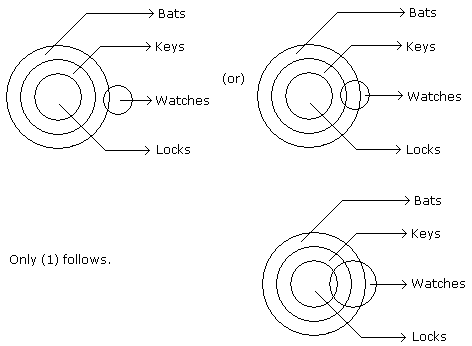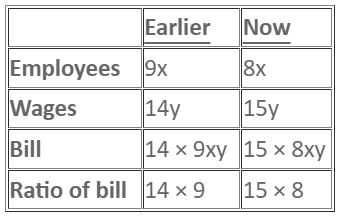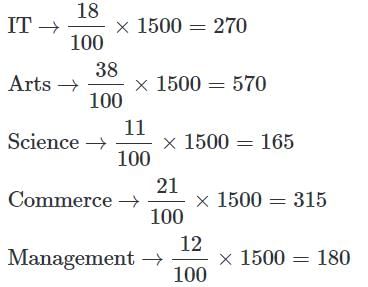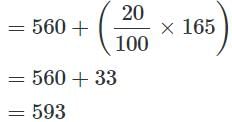ECGC PO Mock Test - 10 - Bank Exams MCQ
30 Questions MCQ Test - ECGC PO Mock Test - 10
Directions to Solve: In each of the questions below consists of a question and two statements numbered I and II given below it. You have to decide whether the data provided in the statements are sufficient to answer the question. Read both the statements and
Give answer:
- (A) If the data in statement I alone are sufficient to answer the question, while the data in statement II alone are not sufficient to answer the question
- (B) If the data in statement II alone are sufficient to answer the question, while the data in statement I alone are not sufficient to answer the question
- (C) If the data either in statement I alone or in statement II alone are sufficient to answer the question
- (D) If the data given in both statements I and II together are not sufficient to answer the question and
- (E) If the data in both statements I and II together are necessary to answer the question.
Question: Madan is elder than Kamal and Sharad is younger than Arvind. Who among them is the youngest ?
Statements:
I.Sharad is younger than Madan.
II.Arvind is younger than Kamal.
- (A) If the data in statement I alone are sufficient to answer the question, while the data in statement II alone are not sufficient to answer the question
- (B) If the data in statement II alone are sufficient to answer the question, while the data in statement I alone are not sufficient to answer the question
- (C) If the data either in statement I alone or in statement II alone are sufficient to answer the question
- (D) If the data given in both statements I and II together are not sufficient to answer the question and
- (E) If the data in both statements I and II together are necessary to answer the question.
Statements:
I.Sharad is younger than Madan.
II.Arvind is younger than Kamal.
Directions to Solve: In each of the questions below consists of a question and two statements numbered I and II given below it. You have to decide whether the data provided in the statements are sufficient to answer the question. Read both the statements and
Give answer:
- (A) If the data in statement I alone are sufficient to answer the question, while the data in statement II alone are not sufficient to answer the question
- (B) If the data in statement II alone are sufficient to answer the question, while the data in statement I alone are not sufficient to answer the question
- (C) If the data either in statement I alone or in statement II alone are sufficient to answer the question
- (D) If the data given in both statements I and II together are not sufficient to answer the question and
- (E) If the data in both statements I and II together are necessary to answer the question.
Question: How is Sulekha related to Nandini ?
Statements:
I.Sulekha's husband is the only son of Nandini's mother.
II.Sulekha's brother and Nandini's husband are cousins.
- (A) If the data in statement I alone are sufficient to answer the question, while the data in statement II alone are not sufficient to answer the question
- (B) If the data in statement II alone are sufficient to answer the question, while the data in statement I alone are not sufficient to answer the question
- (C) If the data either in statement I alone or in statement II alone are sufficient to answer the question
- (D) If the data given in both statements I and II together are not sufficient to answer the question and
- (E) If the data in both statements I and II together are necessary to answer the question.
Statements:
I.Sulekha's husband is the only son of Nandini's mother.
II.Sulekha's brother and Nandini's husband are cousins.
Directions to Solve
In each of the following questions there are three statements. Which are followed by three or four conclusions. Choose the conclusions which logically follow from the given statements.
Question -
Statements:
- All the locks are keys.
- All the keys are bats.
- Some watches are bats.
Conclusions:
- Some bats are locks.
- Some watches are keys.
- All the keys are locks.
A is the son of C; C and Q are sisters; Z is the mother of Q and P is the son of Z. Which of the following statements is true?
- A is B’s sister,
- C is B’s mother,
- D is C’s father,
- E is D’s mother,
then how A is related to D?
Read the following statements carefully to answer the questions:
I. X is older than L.
II. M and N are of equal age.
III. Z is the youngest.
IV. Y is younger than N.
V. Y is older than X.
Q. Which set of statements proves that X is younger than M?
The ratio of number of old employees to the new employees is 9 : 8 and the ratio of their initial to final wages is 14 : 15. What is the ratio of earlier bill of total wages to that of current bill of total wages?
Directions: Study the following bar chart carefully and answer the questions given beside.
In the bar chart, the total numbers of students enrolled in different years from 2015 to 2019 in Sunshine and Aryan Summer camps are given.
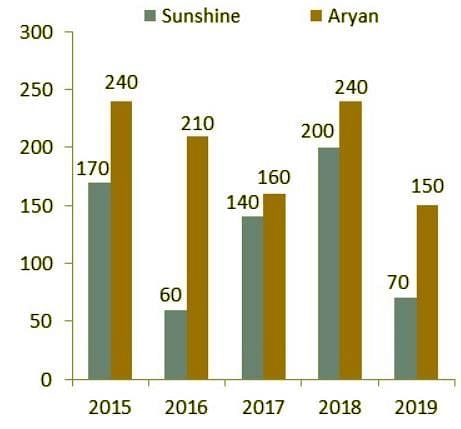
Q. What is the ratio between total students in 2016 to the total students in 2019 of both summer camps?
Directions: Study the following bar chart carefully and answer the questions given beside.
In the bar chart, the total numbers of students enrolled in different years from 2015 to 2019 in Sunshine and Aryan Summer camps are given.
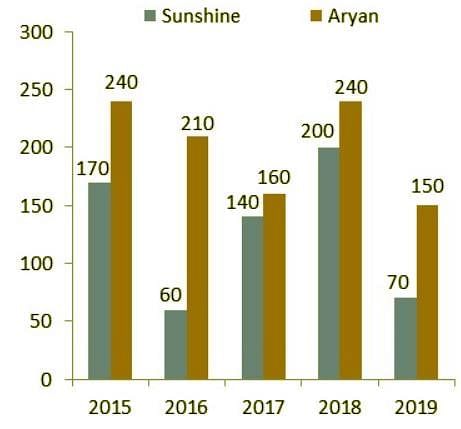
Q. The total number of students enrolled in Sunshine from 2016 to 2019 is what percentage more than the total number of students enrolled in Aryan in 2018 and 2019?
Directions: Study the following pie-charts carefully and answer the questions that follow:
Percentage of Students Enrolled in Different Streams in a College.
Total Number of Students = 3500.
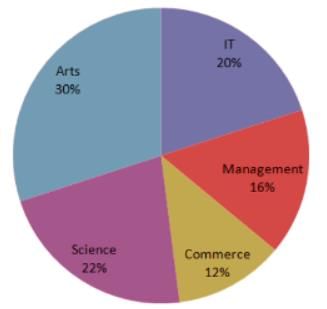
Percentage Break-up of Girls Enrolled in These Streams Out of The Total Students.
Total Number of Girls = 1500.
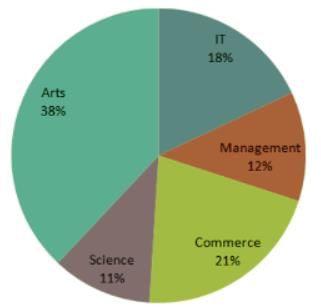
Q. If 20% of the girls enrolled in science change their stream to Management, then what will be the new number of Management students altogether?
Read each sentence carefully to find out whether there is any grammatical error in it. The sentence is divided into four parts (a), (b), (c), and (d). One of these parts may contain a grammatical error. Select the part with the error as your answer. If there is no error in the sentence, mark option (d) as your answer (No error). Ignore punctuation errors, if any.
Read the each sentence to find out whether there is any grammatical error in it. The error, if any will be in one part of the sentence. The letter of that part is the answer. If there is no error, the answer is 'D'. (Ignore the errors of punctuation, if any).
Read the each sentence to find out whether there is any grammatical error in it. The error, if any will be in one part of the sentence. The letter of that part is the answer. If there is no error, the answer is 'D'. (Ignore the errors of punctuation, if any).
A new study has shown that kids (a) / who have a high body mass index are (b) / more likelier to have high blood pressure, cholesterol and blood insulin levels (c) / by the time they reach adolescence (d) / No error (e)
The year 1973… (1)… a watershed in the economic….(2)…..of young male high school graduates in the United States. In the twenty four years…(3).. to this date, the medium income of 25 to 34 year old males, ….(4)… highest level of educational attainment was a high school diploma, ……(5)…. from $14,483 to $24,482 (in constant 1987 dollars.) This increase was the ….(6)… of the rapid growth of the U.S. economy..(7)… this period. As the expression goes, the rapidly growing economy was like a rising tide that…(8)… all boats. This rapid…(9)… in income permitted several generations of young high-school educated men to enjoy a higher standard of living….(10)…their fathers had.
Q. Find the word most appropriate for Blank No. 1
The year 1973… (1)… a watershed in the economic….(2)…..of young male high school graduates in the United States. In the twenty four years…(3).. to this date, the medium income of 25 to 34 year old males, ….(4)… highest level of educational attainment was a high school diploma, ……(5)…. from $14,483 to $24,482 (in constant 1987 dollars.) This increase was the ….(6)… of the rapid growth of the U.S. economy..(7)… this period. As the expression goes, the rapidly growing economy was like a rising tide that…(8)… all boats. This rapid…(9)… in income permitted several generations of young high-school educated men to enjoy a higher standard of living….(10)…their fathers had.
Q. Find the word most appropriate for Blank No. 2
Directions: In the following questions, a sentence is given with two blanks. You have to find the pair of words from the given options that fit both the blanks in the given order and make the sentence grammatically and contextually correct.
It is possible that this piece of _________ is likely to be used against him by his electoral ________.
Directions: Read the passage and answer the questions that follow:
The deadline for the completion of the resolution process under the Insolvency and Bankruptcy Code (IBC), 2016 for the first set of cases taken up has neared or even passed. The IBC provides for a time limit of 180 days (extendable by 90 days) once a case of default is brought and If no resolution plan drawn up under the supervision of a resolution professional can be agreed upon, liquidation must follow to recover whatever sums are possible. While the NCLT has considered a number of cases since its constitution, its role assumed importance when, on 13 June 2017, the Reserve Bank of India (RBI) mandated proceedings against 12 large defaulters, holding accounts with outstanding amounts of more than Rs 5,000 crore, of which at least 60% had been classified as non-performing as of 31 March 2016. These bad loans accounted for around 25% of the non-performing assets (NPAs) recognised at that time.
In most cases, the estimated value of assets on liquidation is low, and does not capture the true value of the company. Put simply, the aggregate of the individual value of a set of stripped assets tends to be much lower than the value of those assets when combined for production. So, if the IBC process and the intervention of the NCLT lead, through bidding, to an offer of a takeover by a third party which is acceptable to the creditors, the recovery against bad loans technically written off by financial creditors would be much higher. Since this was to occur in a time-bound fashion, it seemed to be a significant initiative to address the NPA problem in the banking system. The IBC was combined with legislative amendments that strengthened the powers of the RBI to order the launch of proceedings to recover the loans gone bad. These measures, it was argued, through enforced resolution or liquidation if necessary, offered a way in which the abysmal record of recovery could be corrected and the pressure on the government to bail out banks with taxpayers’ money could be reduced. In the case of 11 public sector banks out of a total of 21, of the loans technically written-off between April 2014 and December 2017, recovery rates varied from nil to just above 20%, and in the case of another three, the rate ranged between 23% and 29%. The average recovery rate for all 21 banks was a pathetic 10.8%. By facilitating and accelerating the recovery effort, the IBC process was expected to raise the rate significantly.
The context in which this new strategy was launched needs recalling. Unlike the period prior to the 1990s, the NPAs that accumulated in the books of banks in recent years were not equitably distributed across different categories of borrowers, big and small, priority and non-priority. Rather, because of a change in the lending strategy during the period of the credit boom after 2003, the NPAs are now concentrated in the hands of large borrowers, primarily corporate borrowers.
The initial experience with the first phase of this multistep process involving the recognition, technical write-off and provisioning, and recovery of NPAs, is revealing for a number of reasons. First, in cases where the assets on offer were of special interest to particular bidders, the rates of recovery have been rather high. This was true of the acquisition of Bhushan Steel by Tata Steel and of Electrosteel by Vedanta. Bhushan Steel owed its financial creditors around Rs 56,000 crore, whereas the Tata Steel bid returned Rs 35,200 crore upfront to the financial creditors, besides giving them a 12.3% stake in the company in lieu of returning the remaining debt. That was substantial relative to the estimated liquidation value of Rs 15,000 crore to Rs 20,000 crore, and far better than the average 10% recovery rate reported on aggregate write-offs in the recent past. The Tatas clearly had a special interest in the deal since its valuation of the company was far higher than that of JSW Group, the other keen bidder. The latter offered the creditors only Rs 29,700 crore.
The evidence that the assets were valuable despite the defaults emerged also from the battle between bidders who were often taken to the courts. Essar Steel, one of the largest defaulters with around Rs 44,000 crore in questionable debt, when put up for sale, elicited expressions of interest from five bidders. Interestingly, besides Tata Steel, Arcelor Mittal, Vedanta, Sumitomo, and Steel Authority of India, the interested parties include the Ruias, who are the original promoters of Essar Steel.
This effort of the defaulting promoters to regain control of the companies concerned at a discount did muddy the water. The original IBC bill did not prevent promoters from making bids for resolution at the NCLT. Some justified the Ruia bid on the grounds that extraneous factors may have led to distress for no fault of the original promoters. But, if the Committee of Creditors (CoC) has taken the firm to the NCLT, it is clearly because they saw the incumbent management as incapable of resolving the crisis faced by the firm. And, if promoters regain control, much of the debt their company owes will be forgiven, with the losses being carried by the financial and operational creditors. Recognising the travesty involved, the government was forced to amend the IBC bill to prohibit promoters from bidding under the NCLT process.
Q. Why was the IBC process combined with legal powers?
I. To enable carrying out resolution or liquidation as per the need of the situation.
II. To decrease the pressure on government to bail banks out.
III. To improve the recovery rates on loans.
Directions: Read the passage and answer the questions that follow:
Development is about expanding the capabilities of the disadvantaged, thereby improving their overall quality of life. Based on this understanding, Maharashtra, one of India’s richest States, is a classic case of a lack of development which is seen in its unacceptably high level of malnutrition among children in the tribal belts. While the State’s per capita income has doubled since 2004, its nutritional status has not made commensurate progress.
Poor nutrition security disproportionately affects the poorest segment of the population. According to NFHS 2015-16, every second tribal child suffers from growth restricting malnutrition due to chronic hunger. In 2005, child malnutrition claimed as many as 718 lives in Maharashtra’s Palghar district alone. Even after a decade of double digit economic growth (2004-05 to 2014-15), Palghar’s malnutrition status has barely improved.
In September 2016, the National Human Rights Commission issued notice to the Maharashtra government over reports of 600 children dying due to malnutrition in Palghar. The government responded, promising to properly implement schemes such as Jaccha Baccha and Integrated Child Development Services to check malnutrition. Our independent survey conducted in Vikramgad block of the district last year found that 57%, 21% and 53% of children in this block were stunted, wasted and underweight, respectively; 27% were severely stunted. Our data challenges what Maharashtra’s Women and Child Development Minister said in the Legislative Council in March — that “malnutrition in Palghar had come down in the past few months, owing to various interventions made by the government.”
Stunting is caused by an insufficient intake of macro- and micro-nutrients. It is generally accepted that recovery from growth retardation after two years is only possible if the affected child is put on a diet that is adequate in nutrient requirements. A critical aspect of nutrient adequacy is diet diversity, calculated by different groupings of foods consumed with the reference period ranging from one to 15 days. We calculated a 24-hour dietary diversity score by counting the number of food groups the child received in the last 24 hours. The eight food groups include: cereals, roots and tubers; legumes and nuts; dairy products; flesh foods; eggs; fish; dark green leafy vegetables; and other fruits and vegetables.
In most households it was rice and dal which was cooked most often and eaten thrice a day. These were even served at teatime to the children if they felt hungry. There was no milk, milk product or fruit in their daily diets. Even the adults drank black tea as milk was unaffordable. Only 17% of the children achieved a minimum level of diet diversity — they received four or more of the eight food groups. This low dietary diversity is a proxy indicator for the household’s food security too as the children ate the same food cooked for adult members.
Q. Which of the following is/are true as per the passage?
I. India’s situation is worse than in some of the world’s poorest countries — Bangladesh, Afghanistan or Mozambique.
II. Development is more than just economic growth.
III. On an average, the nutrition expenditure as a percentage of the Budget has drastically declined from 1.68% in 2012-13 to 0.94% in 2018-19.
Directions: Out of the given alternatives, choose the one which can be substituted for the given words/sentence.
Occurring at night
Where was the 17th Indian Cooperative Congress inaugurated?
How much financing has the World Bank approved to support India's low-carbon transition?
What milestone did Russia achieve according to discussions at the 22nd India-Russia Annual Summit?
Which of the following is not a function of modern lighthouses in India?
What percentage of global growth does the IMF project for 2024?



